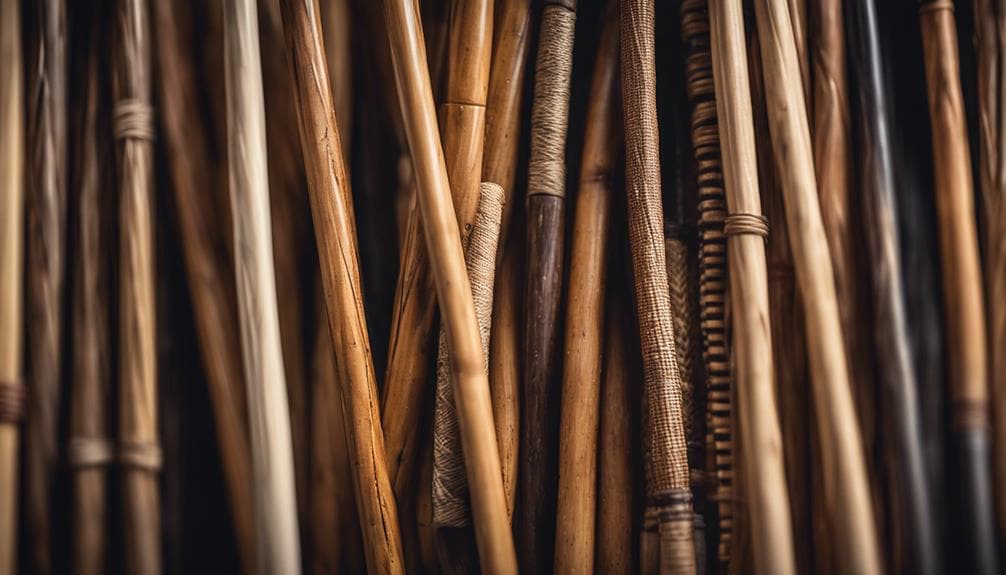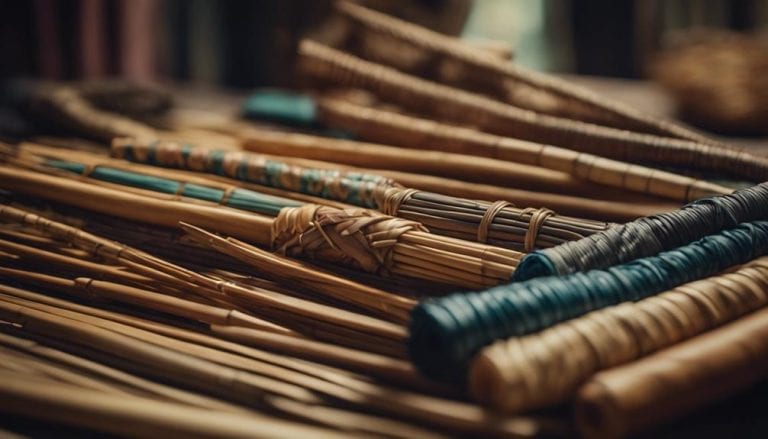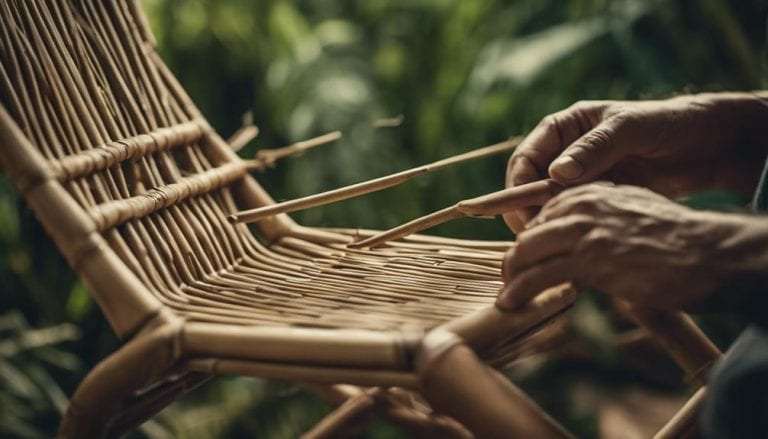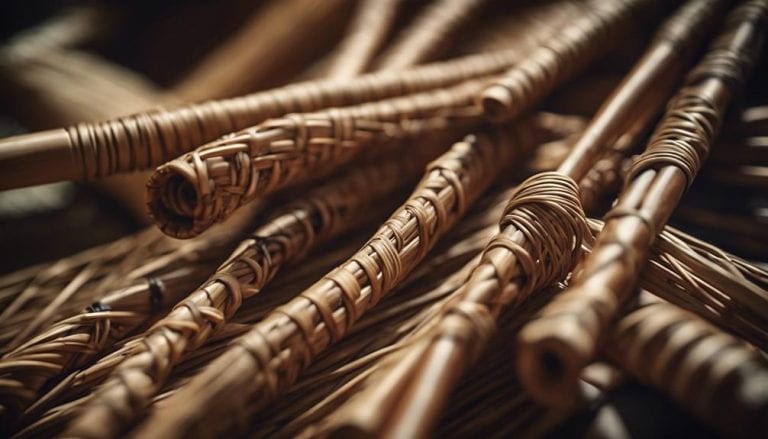Choosing the Right Rattan Cane for Weaving
Just as a painter meticulously selects their brushes, the choice of rattan cane for a weaving project demands equal consideration. Through my years of experience, I’ve learned that not all canes are created equal—their variety in thickness, flexibility, and durability plays a pivotal role in the crafting process.
Whether you’re weaving a delicate piece that requires finesse or a robust item that needs to withstand the test of time, understanding the nuances of each type of rattan is crucial. But how do you navigate this maze of options to find the perfect match for your project? Let’s explore this together, and I’ll share some insights that might change how you approach your next weaving endeavor.
When choosing a rattan cane for weaving, it’s important to consider its thickness and flexibility. A thicker cane will make stronger baskets, while a thinner one will allow more intricate designs. Also, look for a flexible cane that won’t break easily when you bend or twist it.
Key Takeaways
- Consider rattan variety, like Calamus manan or Tahiti Cane, for specific texture and flexibility needs.
- Assess cane quality, focusing on durability, color, and flexibility to ensure long-lasting weaving outcomes.
- Match rattan type to project demands, balancing aesthetics with the weave’s intricacy and intended furniture use.
- Factors in maintenance and longevity include choosing rattan that supports easy care and resists fading or cracking over time.
Understanding Rattan Varieties
In my journey through weaving, I’ve learned that selecting the right rattan variety, be it Calamus manan for its robustness, Calamus caesius for smooth weaving, or Calamus zollingeri for decorative charm, is pivotal to the project’s success. Each variety brings unique color variations and texture differences, profoundly impacting the woven pieces’ aesthetic and functional outcome.
Working with Calamus Manan has allowed me to create pieces that withstand the test of time, its strength lending durability to furniture that demands flexibility. On the other hand, Calamus caesius, with its smooth texture and uniform color, has been my go-to for projects requiring intricate weaving patterns. Its predictability in color and texture ensures a seamless appearance, which is crucial for detailed designs.
Meanwhile, Calamus Zollingeri, with its natural aesthetic appeal, offers a touch of elegance and a hint of rustic charm to decorative pieces. Its unique texture and color nuances have inspired me to experiment with various weaving techniques and pattern options, pushing the boundaries of traditional cane weaving.
Understanding these differences has been instrumental in my ability to select the right rattan for each project, ensuring both beauty and functionality in my woven creations.
Evaluating Cane Quality
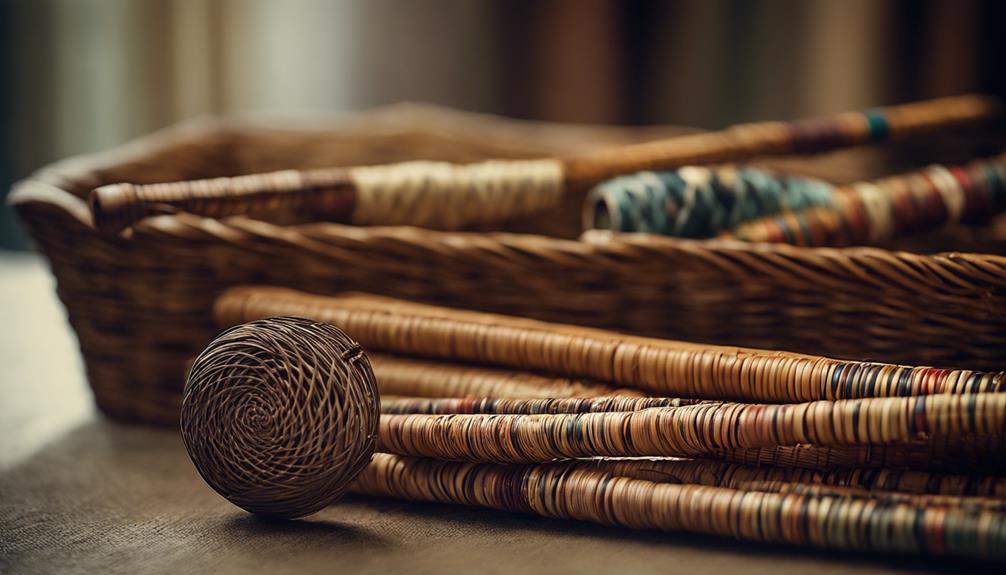
After mastering the selection of rattan varieties, I’ve learned that closely evaluating cane quality is crucial for ensuring my weaving projects turn out beautiful and durable. The first aspect I scrutinize is the cane texture. Quality rattan should feel smooth under my fingers, indicating it’s free from any cracks or splits that could compromise the integrity of my work. This smoothness also suggests flexibility, a vital characteristic that allows the cane to bend without breaking, making it easier to work.
Equally important is color consistency. I’ve found that rattan cane with uniform color enhances the finished product’s aesthetic appeal and signals careful processing and treatment. It ensures that each piece I weave contributes to a cohesive look without unexpected color variations that could detract from the overall design.
I also make a point to check for any signs of mold, mildew, or insect damage, which could indicate poor storage or inferior quality. Lastly, the natural shine on high-quality rattan is a telltale sign of its excellence, a subtle sheen that promises durability and beauty in the final weaving project.
Project Needs Assessment
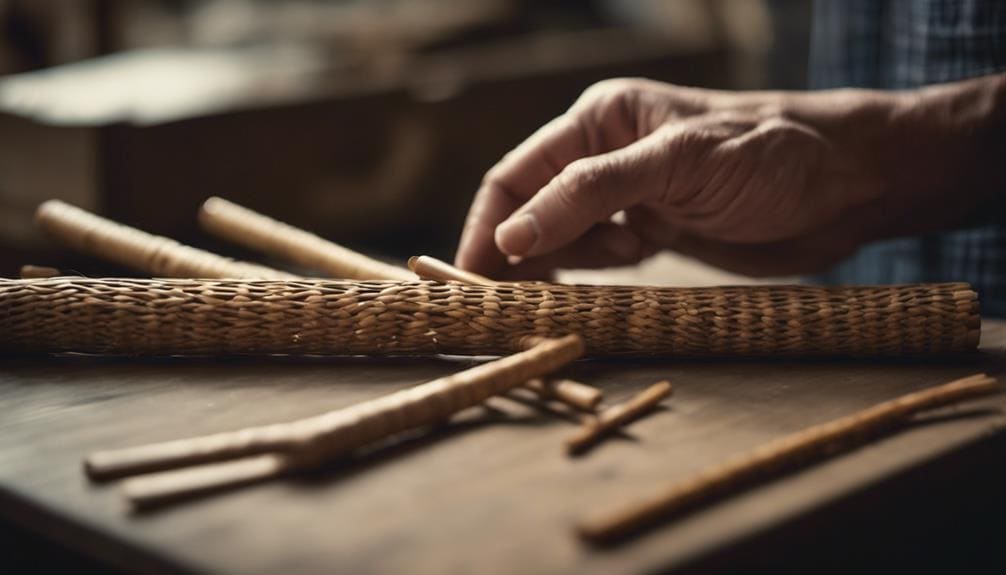
Before selecting the right rattan cane for my weaving projects, I always assess the project’s specific needs to ensure the material’s type and size align perfectly with my creative vision and functional requirements. It’s a methodical approach that guarantees the success of my creations, blending material selection and weaving techniques seamlessly.
To dive deeper:
- The intricacy of the weave: My designs’ complexity often dictates the rattan cane’s thickness and flexibility. Thin, pliable canes are my go-to for delicate patterns, while sturdier ones support more robust structures.
- Intended use and aesthetic: I consider what the final piece will be used for and how I want it to look. This decision impacts not just the choice of rattan but also the weaving challenges I might face and the creative solutions I’ll employ.
- Consultation with experts: Engaging with seasoned weavers and suppliers offers invaluable insights into the best types of rattan for my projects. Their advice helps me navigate potential pitfalls, ensuring a beautiful and durable outcome.
Each project is a unique journey where the right material selection lays the foundation for crafting pieces that are not only visually captivating but also structurally sound.
Flexibility Vs. Strength
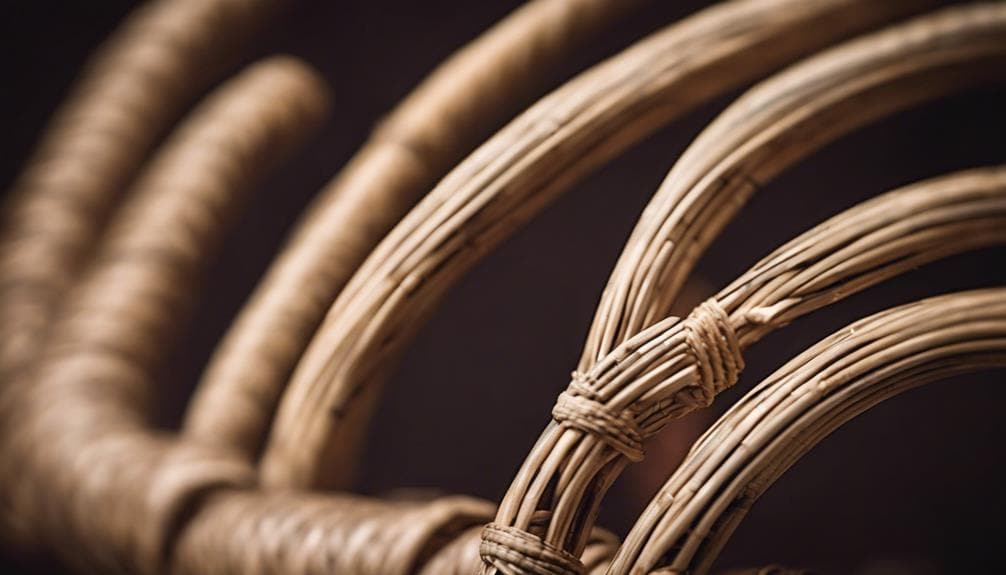
Navigating the delicate balance between flexibility and strength is crucial when choosing the right rattan cane for weaving projects. Understanding the material properties of various rattan cane varieties has been a cornerstone of my weaving journey. It’s this intricate dance between allowing for design creativity and ensuring structural integrity that shapes the outcome of every piece I create.
Flexibility in rattan cane doesn’t just mean it’s easier to handle; it opens up a world of weaving techniques that bring my most intricate designs to life. However, this flexibility mustn’t compromise the strength required for the finished piece to stand the test of time. I’ve learned that the strength of rattan ensures durability and longevity, especially in furniture construction, where it’s most critical.
Choosing the right balance isn’t a one-size-fits-all solution. It varies greatly depending on the specific project at hand. A higher degree of flexibility might be desirable for more delicate, decorative pieces. Conversely, for functional items like chairs, a stronger cane is essential. This understanding has been pivotal in selecting the right material for each project, ensuring that each piece meets the design creativity I envision and maintains the structural integrity needed for real-world use.
Aesthetic Considerations
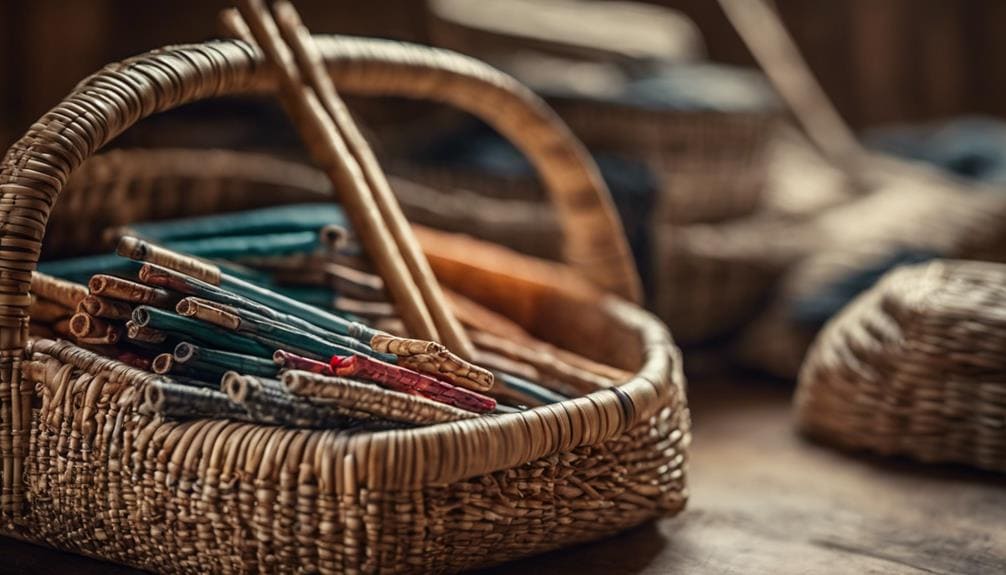
While balancing flexibility and strength in rattan cane is crucial, it’s equally important to consider its aesthetic impact on the final piece. As an experienced weaver, I’ve come to appreciate the subtle nuances that can elevate a piece from merely functional to truly extraordinary. Aesthetic considerations are not just an afterthought but integral to the creation process.
- Color selection and texture matching: The right color and texture of rattan cane is pivotal. It’s not just about what looks good but what feels right. The natural grain and consistent thickness contribute to a polished look, enhancing the visual appeal and ensuring the piece resonates with the intended design style—traditional, modern, or eclectic.
- Finish options and design cohesion: The finish on the rattan cane can dramatically affect the overall aesthetic. A glossy finish might lend a sleek, modern edge, while a matte finish could enhance a more rustic, earthy feel. It’s all about ensuring that every aspect of the cane contributes to a cohesive design vision.
Crafting with rattan cane goes beyond mere technique—it’s about making artistic decisions that affect the piece’s soul. This intimate understanding of material and design transforms a simple object into a masterpiece.
Maintenance and Durability
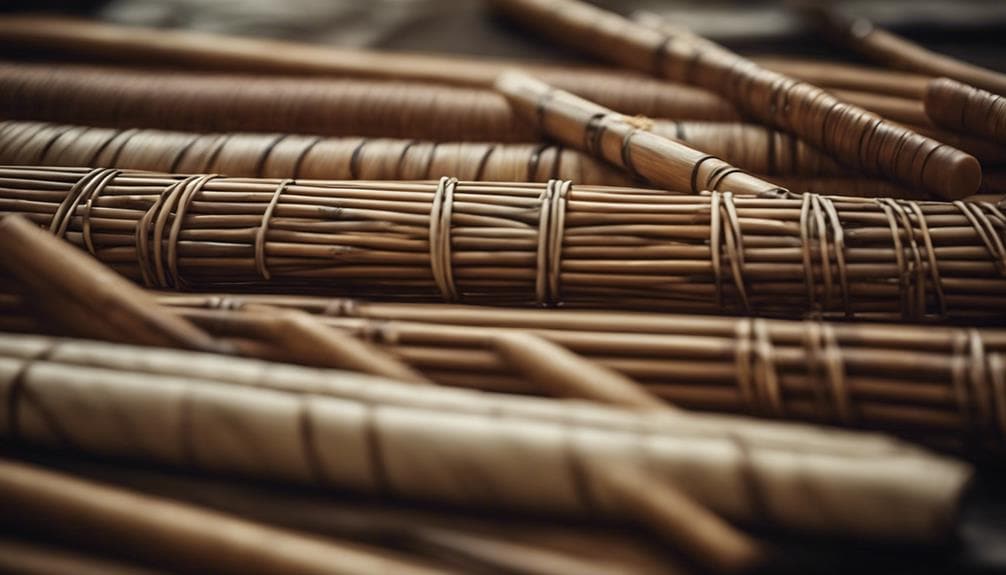
Ensuring the longevity and beauty of rattan cane furniture necessitates a dedicated maintenance routine. From my experience, regular dusting and the occasional waxing are not just simple cleaning techniques; they’re essential practices that significantly contribute to the longevity of these delicate pieces. I’ve learned that furniture covers can shield our beloved items from harsh outdoor elements, extending their lifespan and ensuring their weather resistance.
Moreover, I’ve found that while cane furniture boasts a bit more resilience than rattan, it still demands a gentle touch and care to preserve its aesthetic appeal. Polyrattan, on the other hand, has been a game-changer for my outdoor setups, offering enhanced durability without sacrificing style.
One crucial care tip I’ve come to appreciate is the importance of limiting moisture exposure. It’s a simple yet effective strategy to prevent damage and maintain the durability of rattan furniture. This approach protects my investments and allows me to enjoy their beauty and functionality for years. Through these insights, I’ve discovered that a little attention and care can go a long way in preserving the charm and durability of rattan cane furniture.
Frequently Asked Questions
What Is the Difference Between a Cane and a Rattan?
I’ve learned the main difference is where they come from; rattan’s the whole vine, offering strength and a natural look, while cane, its outer layer, shines in durability and adds a refined touch.
What Is the Difference Between Rattan and Cane Webbing?
I’ve found that rattan’s the robust heart of the palm, offering unmatched durability. Cane webbing, its refined sibling, weaves intimacy into spaces originating in rattan’s inner bark. Both materials uniquely contribute to weaving’s art.
How Long to Soak Rattan Before Weaving?
Soaking my rattan in warm water for at least 12 hours works best. Depending on its thickness, I might extend it up to 24 hours. This technique ensures it’s perfectly pliable for my weaving projects.
What Size Chair Cane Do I Need?
Navigating chair cane sizes is like threading a needle in the dark. I measure hole dimensions meticulously for chair durability and intricate weaving patterns, ensuring my selections enhance strength and beauty intimately.
Conclusion
In the weaving world, choosing the right rattan cane is akin to finding the perfect dance partner – it’s all about harmony and connection. Having navigated the nuances from rattan varieties to assessing project needs, I’ve learned that the devil is in the details. Opting for a cane that mirrors the project’s strength and aesthetic requirements while not skimping on quality ensures your creation withstands the test of time. Remember, a meticulously chosen rattan cane doesn’t just complete a project; it elevates it.

